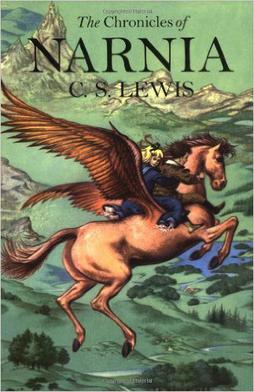
The Chronicles of Narnia is a series of seven portal fantasy novels by British author C. S. Lewis. Illustrated by Pauline Baynes and originally published between 1950 and 1956, the series is set in the fictional realm of Narnia, a fantasy world of magic, mythical beasts and talking animals. It narrates the adventures of various children who play central roles in the unfolding history of the Narnian world. Except in The Horse and His Boy, the protagonists are all children from the real world who are magically transported to Narnia, where they are sometimes called upon by the lion Aslan to protect Narnia from evil. The books span the entire history of Narnia, from its creation in The Magician's Nephew to its eventual destruction in The Last Battle.
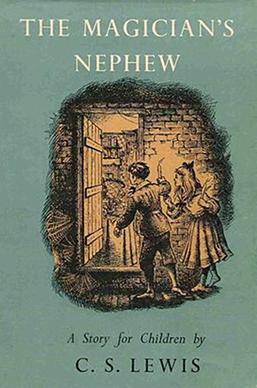
The Magician's Nephew is a portal fantasy children's novel by C. S. Lewis, published in 1955 by The Bodley Head. It is the sixth published of seven novels in The Chronicles of Narnia (1950–1956). In recent editions, which sequence the books according in chronological order, it is placed as the first volume of the series. Like the others, it was illustrated by Pauline Baynes whose work has been retained in many later editions. The Bodley Head was a new publisher for The Chronicles, a change from Geoffrey Bles who had published the previous five novels.
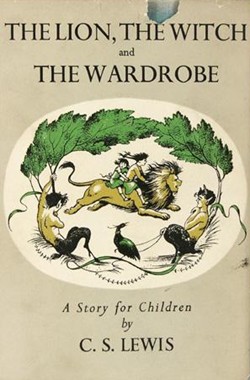
The Lion, the Witch and the Wardrobe is a portal fantasy novel for children by C. S. Lewis, published by Geoffrey Bles in 1950. It is the first published and best known of seven novels in The Chronicles of Narnia (1950–1956). Among all the author's books, it is also the most widely held in libraries. It was the first of The Chronicles of Narnia to be written and published, but is marked as volume two in recent editions that are sequenced according the stories' internal chronology. Like the other Chronicles, it was illustrated by Pauline Baynes, and her work has been retained in many later editions.
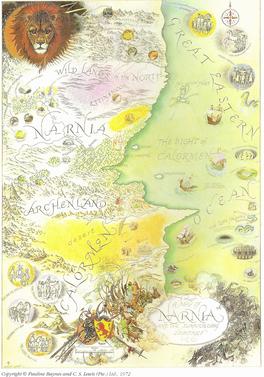
Narnia is a fantasy world created by C. S. Lewis as the primary location for his series of seven fantasy novels for children, The Chronicles of Narnia. The world is named after the country of Narnia, where much of the Chronicles takes place.

The Horse and His Boy is a fantasy novel for children by C. S. Lewis, published by Geoffrey Bles in 1954. Of the seven novels that comprise The Chronicles of Narnia (1950–1956), The Horse and His Boy was the fifth to be published. The novel is set in the period covered by the last chapter of The Lion, the Witch, and the Wardrobe during the reign of the four Pevensie children as Kings and Queens of Narnia. Though three of the Pevensies appear as minor characters in The Horse and His Boy, the main characters are two children and two talking horses who escape from Calormen and travel north into Narnia. On their journey, they learn of the Prince of Calormen's plan to attack Archenland, and warn the King of Archenland of the impending strike.

Mr. Tumnus is a faun in The Chronicles of Narnia books written by C. S. Lewis, primarily in The Lion, the Witch and the Wardrobe but also briefly in The Horse and His Boy and in The Last Battle. He is the first creature Lucy Pevensie meets in Narnia and becomes her first friend in the kingdom. Lewis wrote that the first Narnia story, The Lion, the Witch and the Wardrobe, all came to him from a single picture he had in his head of a faun carrying an umbrella and parcels through a snowy wood. Tumnus thus became the initial inspiration for the entire Narnia series.
In C. S. Lewis's Chronicles of Narnia series of novels, Calormen is a large country to the southeast of Narnia. Lewis probably derived its name from the Latin calor, meaning "heat". When using the name as an adjective or an ethnonym, Lewis spelled the name with an 'e' at the end: a Calormene soldier; "The Calormenes have dark faces and long beards."
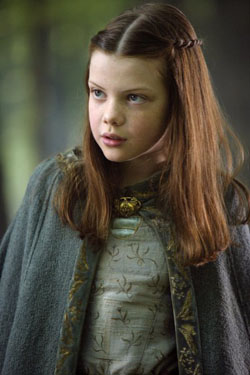
Lucy Pevensie is a fictional character in C. S. Lewis's The Chronicles of Narnia series. She is the youngest of the four Pevensie children, and the first to find the Wardrobe entrance to Narnia in The Lion, the Witch and the Wardrobe. Of all the Pevensie children, Lucy is the closest to Aslan. Also, of all the humans who have visited Narnia, Lucy is perhaps the one that believes in Narnia the most. She is ultimately crowned Queen Lucy the Valiant, co-ruler of Narnia along with her two brothers and her sister. Lucy is the central character of the four siblings in the novels. Lucy is a principal character in three of the seven books, and a minor character in two others.

Peter Pevensie is a fictional character in C. S. Lewis's The Chronicles of Narnia book series. Peter appears in three of the seven books; as a child and a principal character in The Lion, the Witch and the Wardrobe and Prince Caspian, and as an adult in The Last Battle. He is mentioned in The Horse and His Boy, in which he is away on the northern frontier fighting giants, and in The Voyage of the Dawn Treader, in which he is studying under the tutelage of Professor Kirke.

Edmund Pevensie is a fictional character in C. S. Lewis's The Chronicles of Narnia series. He is a principal character in three of the seven books, and a lesser character in two others.

Prince Caspian is a fictional character in The Chronicles of Narnia by C. S. Lewis. He is featured in three books in the series: Prince Caspian, The Voyage of the Dawn Treader, and The Silver Chair. He also appears at the end of The Last Battle.
Aravis is a fictional character in the 1954 novel The Horse and His Boy by C. S. Lewis.
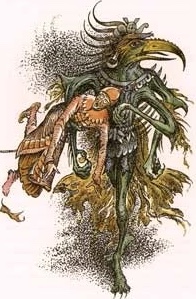
Tash is a fictional deity and demonic god, found in C. S. Lewis's Chronicles of Narnia series. He is an antagonist in the novels The Horse and His Boy and The Last Battle.
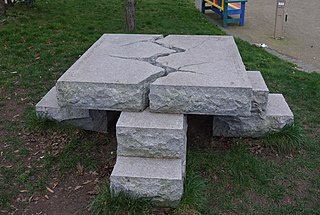
In C. S. Lewis's fantasy novel series the Chronicles of Narnia, the hill of the Stone Table, or Aslan's How, is a high mound or cairn, located south of the Great River in Narnia next to the Great Woods. The How was built over the hill of the Stone Table. The word how derives from the Old Norse haugr, meaning hill or mound. In parts of England, it is a synonym for barrow.
Shasta, later known as Cor of Archenland, is a fictional character in C. S. Lewis' Chronicles of Narnia. He is the principal character in the fifth book published in the series, The Horse and His Boy. The book's events, however, are chronologically third in the series. He also appears briefly at the end of The Last Battle, the seventh and final book in the series.
Bree is a fictional character in C. S. Lewis's The Chronicles of Narnia. He is one of the title characters and is featured prominently in The Horse and His Boy. This was the book published fifth, but the book's events are chronologically third.

Aslan is a major character in C. S. Lewis's The Chronicles of Narnia series. Unlike any other character in the Narnian series, Aslan appears in all seven chronicles. Aslan is depicted as a talking lion and is described as the King of Beasts, the son of the Emperor-Over-the-Sea, and the King above all High Kings in Narnia.
The following outline is provided as an overview of and topical guide to Narnia:
Magical creatures are an important aspect of the fictional world of Narnia contained within The Chronicles of Narnia book series and connected media originally created by C. S. Lewis. Throughout the seven books of the series, the protagonists encounter a variety of these creatures as they travel throughout Narnia and the surrounding lands and seas, including Archenland, Calormen, and the Great Eastern Ocean.












